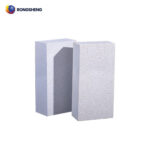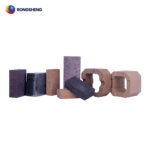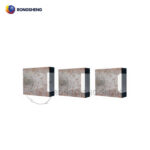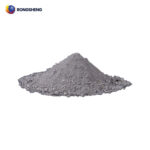Buy High-Quality Lightweight Mullite Insulation Bricks
The wide application of lightweight insulation bricks not only conforms to the concept of environmental protection and resource conservation, but also has the benefit of waste heat insulation for industrial kilns, which improves work efficiency and greatly saves production costs. To purchase lightweight mullite insulation bricks, please choose a strong refractory brick manufacturer. Rongsheng Long Life Refractory Brick Manufacturer has a good reputation in the industry, affordable prices and fast delivery. Contact Rongsheng for detailed information.
Rongsheng Lightweight Mullite Insulation Brick Manufacturer
Lightweight refractory bricks refer to refractory products with high porosity, low bulk density and low thermal conductivity. Lightweight refractory bricks are characterized by porous structure (porosity is generally 40%~85%) and high thermal insulation. Lightweight mullite insulation bricks are a representative product of new energy-saving and environmentally friendly high-temperature furnace lining lightweight thermal insulation.
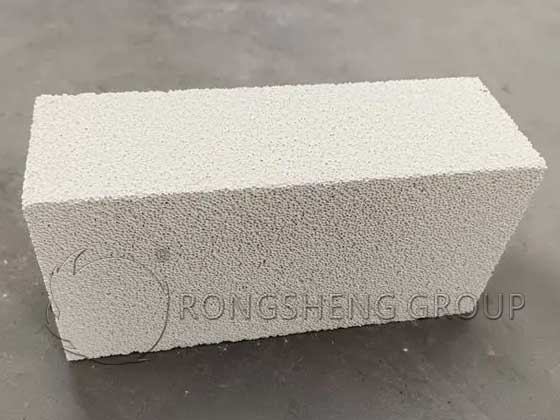
-
What is mullite lightweight insulation brick? What are its advantages?
High-alumina refractory materials with mullite as the main crystal phase are called mullite lightweight insulation bricks. Generally, the alumina content is between 65% and 75%. In addition to mullite, the mineral composition also contains a small amount of glass phase and quartz with a lower alumina content; and a small amount of corundum with a higher alumina content. The advantage of mullite lightweight insulation bricks is that they can be exposed to flames and directly used for high-temperature kiln linings. Mullite lightweight insulation bricks are a kind of refractory insulation material that is widely used in emerging industrial kilns and high-temperature equipment.
-
Characteristics, physical and chemical indicators and application scope of mullite lightweight insulation bricks
Characteristics of mullite lightweight insulation bricks
-
- Low thermal conductivity, with good thermal insulation effect.
- Low heat melting. Due to low thermal conductivity, mullite series lightweight insulation bricks accumulate very little heat energy, and the energy saving effect is obvious in intermittent operation.
- Low impurity content has very low content of oxides such as iron and alkali metals. Therefore, the refractoriness is high. The higher aluminum content enables it to maintain good performance under reducing atmosphere.
- High hot compressive strength.
- Precise appearance dimensions, speed up masonry, reduce the use of refractory mud, and ensure the strength and stability of masonry. Thereby extending the life of the lining.
- It can be processed into special shapes to reduce the number of bricks and masonry joints.
Due to these characteristics of mullite lightweight insulation bricks, we can well observe that its refractoriness is high, which can reach above 1790℃. The load softening start temperature is 1600 ~ 1700℃. Room temperature compressive strength 70~260MPa. Good thermal shock resistance.
Physical and chemical indicators of mullite lightweight insulation bricks. According to the different use temperatures, the models can be divided into seven series: MG-23, MG-25, MG-26, MG-27, MG-28, MG-30, and MG-32.
Combined with the physical and chemical indicators of mullite lightweight insulation bricks, lightweight mullite insulation bricks are widely used in various industrial kilns. Such as bell-type furnaces, heating furnaces, cracking furnaces, heat treatment furnaces, shuttle kilns, tunnel kilns, roller kilns, enamel kilns, ceramic kilns, ceilings and walls, as well as thermal insulation lining materials.
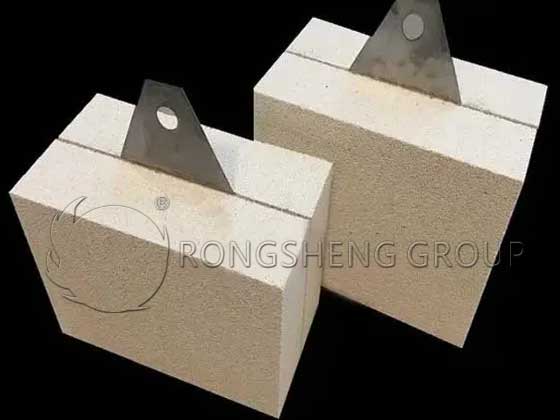
-
Specifications and dimensions of mullite lightweight insulation bricks
The most typical and commonly used size is still 230*114*65mm. It can also be precisely cut and processed into other special sizes according to the needs of the operation. So, how many pieces are there in one ton of mullite insulation bricks? Taking the standard size (230*114*65mm, body density 1.0g/cm) as an example, the weight of a single piece is about 1.7kg, so one ton is about 588 pieces.
-
What is the price of mullite lightweight insulation bricks?
The factors that determine the price are determined by the density and size of mullite lightweight insulation bricks. The general price is about 3800-6000 yuan. Remember to have technical exchanges with the insulation brick manufacturer before purchasing. Reduce unnecessary troubles and get the most suitable products.
The Difference between the Lightweight Mullite Insulation Bricks
In the JM series of lightweight mullite insulation bricks, JM23, JM26, JM28, and JM30 represent brick numbers of different grades. These bricks of different grades differ in insulation performance, physical and chemical indicators, and scope of application. So, what are the differences between them? Let’s take a look!
Different alumina content
The alumina content of lightweight mullite insulation bricks increases with the increase of grade. The alumina content of JM23 is between 38-44%, JM26 is 50-58%, JM28 is 65-70%, and JM30 is as high as 70-73%. The increase in alumina content not only affects the insulation performance, but also improves the refractoriness.
Different refractoriness
As the alumina content increases, the refractoriness of lightweight mullite insulation bricks also increases. The refractoriness of JM23 is 1350°C, JM26 is 1430°C, JM28 is 1540°C, and JM30 is as high as 1600°C. The improved refractoriness makes these bricks more stable in high temperature environments.
Different volume density
Volume density is also an important indicator to distinguish different grades of bricks. The volume density of JM23 is 0.6g/cm³, the volume density of JM26 and JM28 is the same, 0.8g/cm³, and the volume density of JM30 is 1g/cm³.
Different compressive strength at room temperature
The compressive strength at room temperature reflects the load-bearing capacity and service life of the brick. The compressive strength of JM23 is 1.3Mpa, JM26 is 2Mpa, JM28 is 3Mpa, and JM30 is as high as 3.5Mpa. The increase in compressive strength makes these bricks perform better at room temperature.
Differences in other physical and chemical indicators
In addition to the common differences mentioned above, these lightweight mullite insulation bricks also differ in thermal conductivity, reburning line change rate, etc. These indicators reflect the thermal conductivity and stability of the material, and we can choose according to the detailed physical and chemical indicators when choosing.
Through the above comparison, we can see that lightweight mullite insulation bricks of different grades are different in all aspects. When choosing, you can choose the appropriate brick number according to specific needs and scenarios to ensure the best effect.

